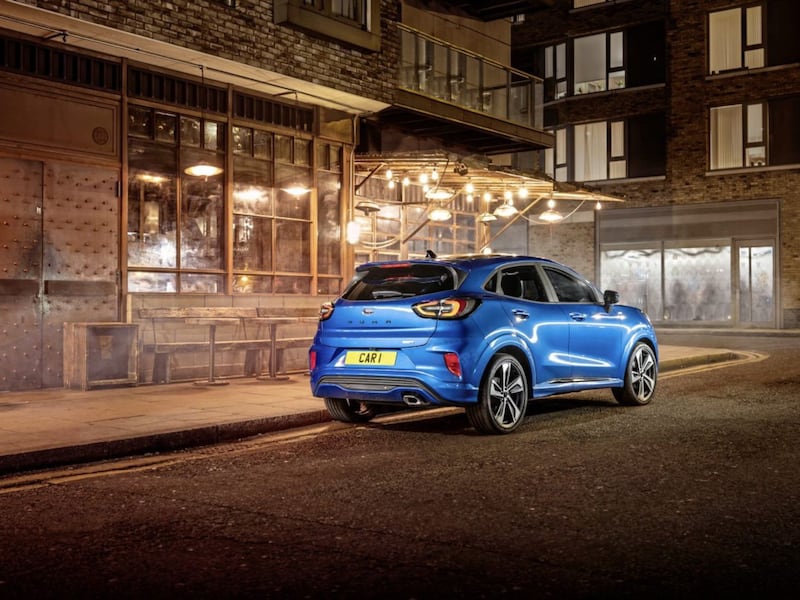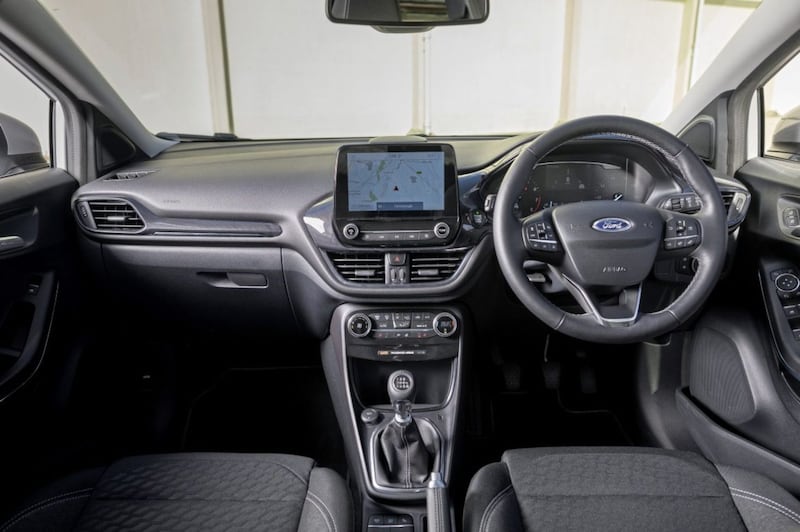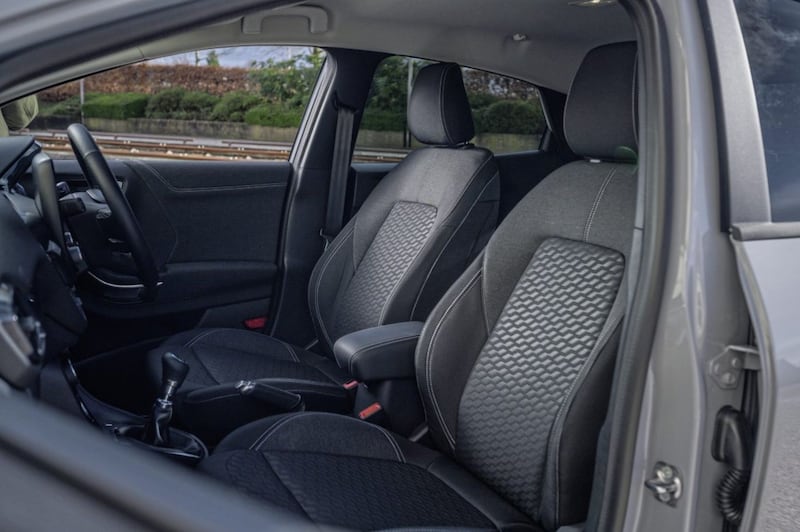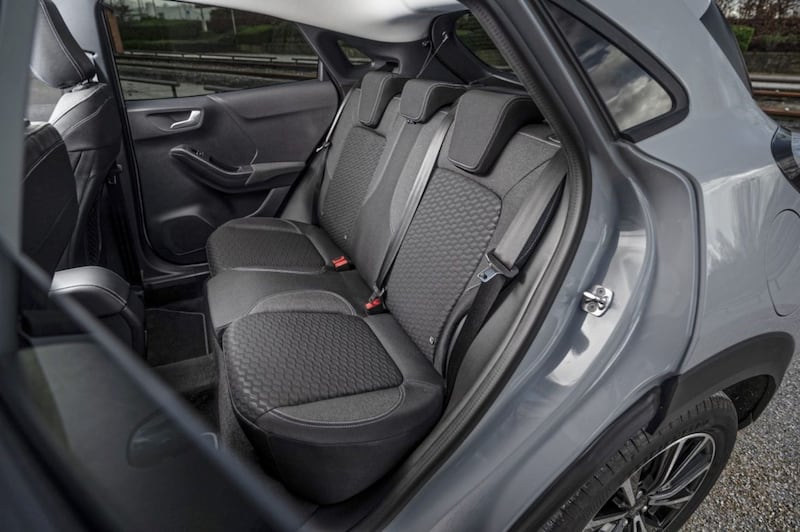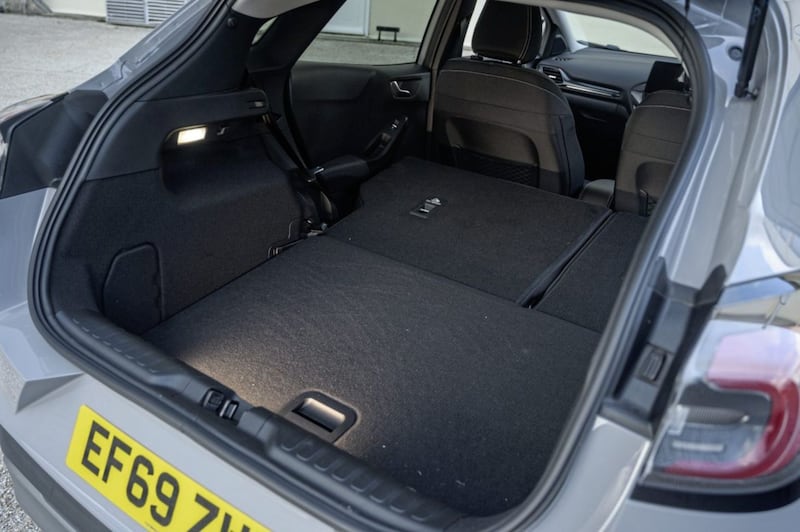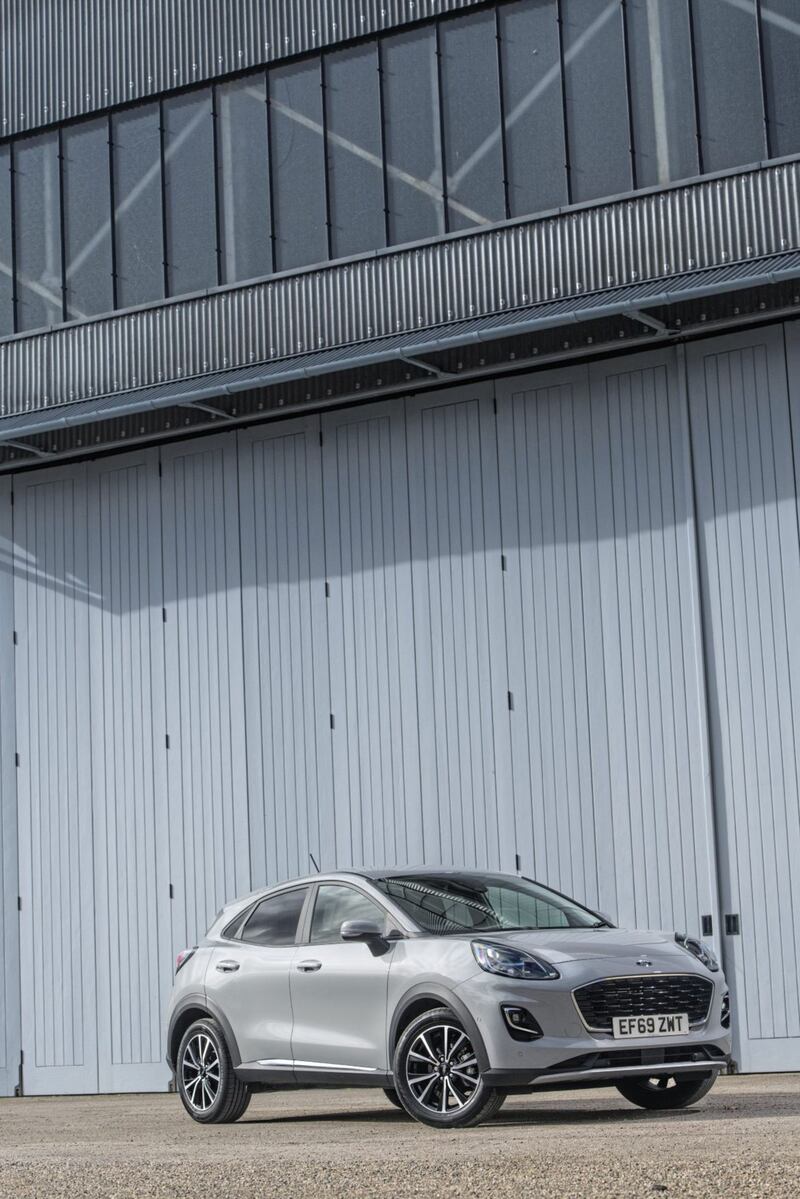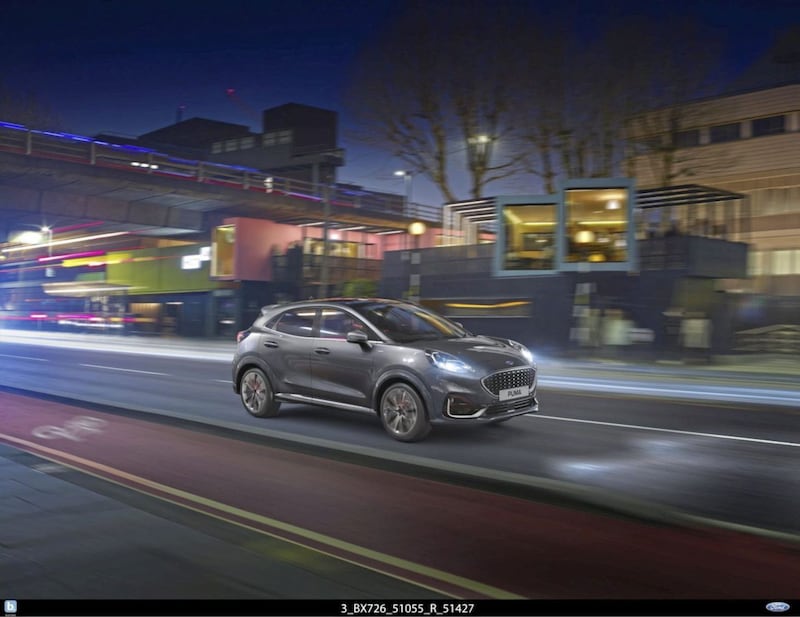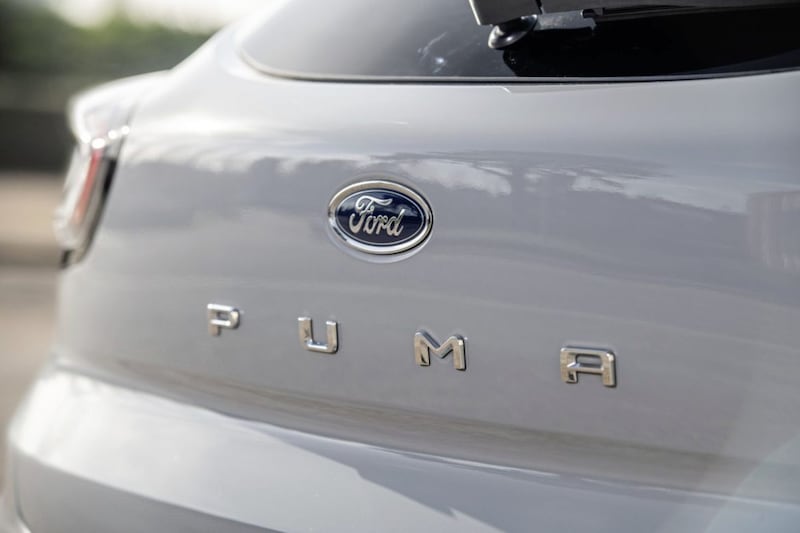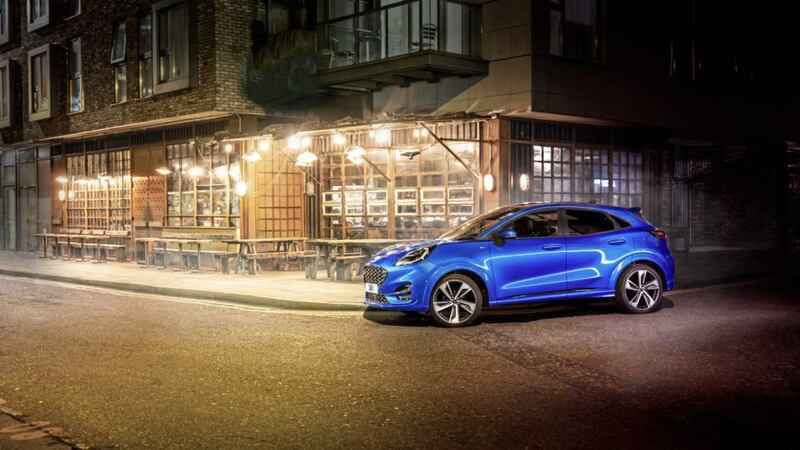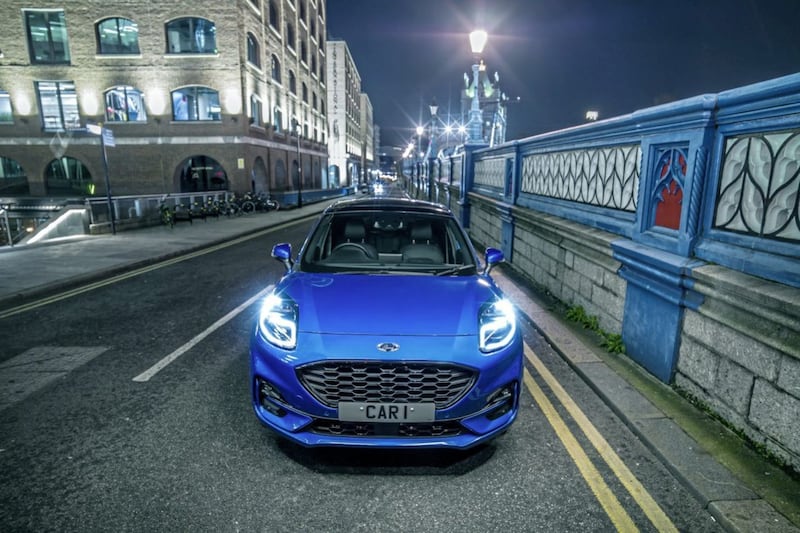
YOU can't accuse Ford of rushing into things. It might be able to churn out top-of-the-class small and family hatchbacks blindfolded, but for some reason it has taken it ages to come up with a baby SUV that's as remotely competitive as the much-loved Fiesta and Focus, writes William Scholes.
It seemed content to fob off buyers with the dismal Ecosport, as if it thought this SUV trend was a passing craze that people would eventually recover from, like the United States making Donald Trump president.
When it became apparent that SUVs are here to stay and will comfortably outlive a Trump presidency, Ford decided to roll up its sleeves and do the job properly.
The car on this page is the result of that endeavour. Called the Puma - cribbing the name from the dinky sports coupe memorably advertised by the ghost of Steve McQueen - it's a properly good small SUV, worthy of serious consideration alongside its by-now established rivals from Renault, Peugeot, Mazda and the like.
It shares a platform - albeit stretched by 10cm and widened - with the Fiesta, which also means that car's engines, gearboxes and other ancillary tech can slot in. This is an excellent place to start from, as the Fiesta is a quite brilliant car.
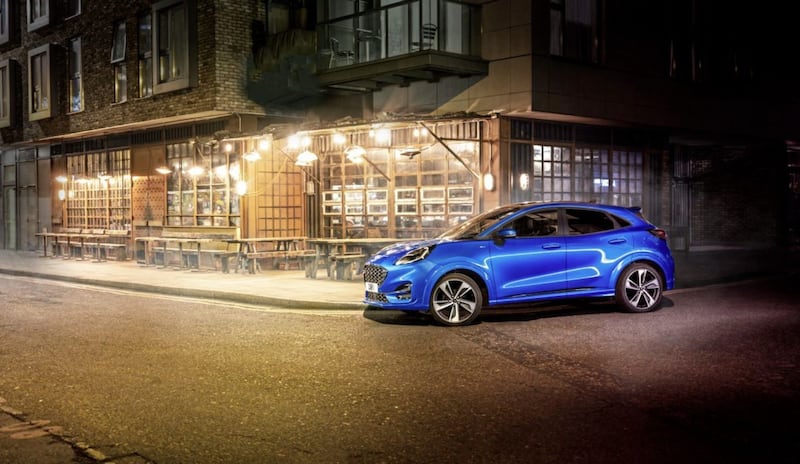
It looks nothing like a Fiesta from the outside, though. The Puma, with its bulging front wings and sloping roofline, is a far more interesting shape. Squint a bit, and it could even pass for a scale model of a Porsche Macan.
Inside, things are far more conservative and business-as-usual for Ford. That means it isn't as good to look at or touch as the interior of a Renault Captur or, in particular, the Peugeot 2008, a car with a wow factor cabin.
Still, the Puma is comfortable and sensibly laid out. A touchscreen in the middle of the dashboard houses the sat-nav and DAB radio. Connecting a phone by Bluetooth is commendably straightforward.
Apple CarPlay and Android Auto are on board and the infotainment system also acts as a wifi hotspot for up to 10 devices.
The Puma's extra length, width and height compared to a Fiesta translates into a roomier, airier and more practical car. The growth spurt is enough to make the Puma feel Focus-sized.
Indeed, the back seat feels not only as roomy as that found in the Focus but also brighter, which ought to make it more appealing to children.
When it became apparent that small SUVs are here to stay and will comfortably outlive a Trump presidency, Ford decided to roll up its sleeves and do the job properly. The Puma is the result of that endeavour
One feature Ford makes much of is the so-called 'megabox'. This isn't a family-sized bargain bucket offering from KFC or McDonald's but is essentially an 80-litre plastic-lined box lurking beneath the boot floor, roughly where you would once have found a spare wheel.
The idea is that it's an ideal receptacle for dirty boots and wet coats, and that it can be hosed clean afterwards because it has a little plughole in the bottom. It's also sufficiently deep to allow golfists to carry their bags upright.
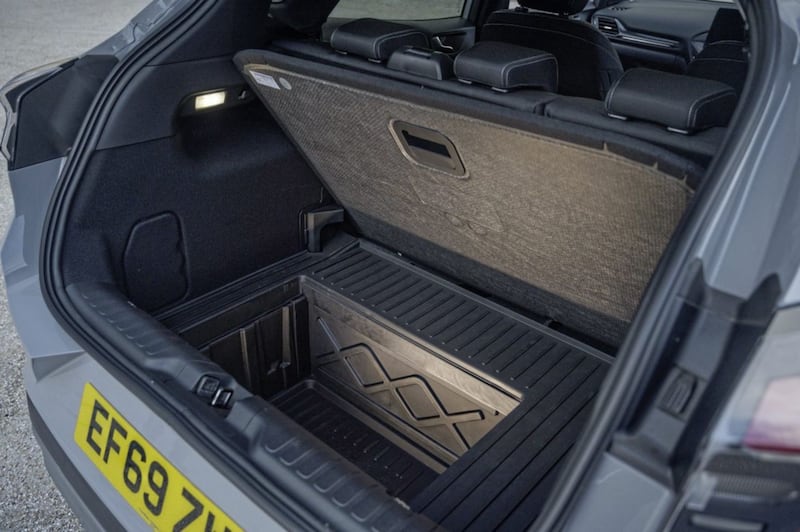
The megabox contributes to a very large boot volume of 456 litres, though you may, of course, have simply preferred a spare wheel or a Big Mac...
Engines are all 1.0-litre three-cylinder turbocharged petrols, offered for now in 123bhp or 153bhp flavours.
Mild-hybrid assistance is standard on the more powerful car and optional on the lesser. The 48-volt system uses a motor with 15bhp and 37lb ft to mask turbo lag and massage fuel consumption and CO2 emissions. It also features an excellent, quick-reacting stop-start system.
The megabox contributes to a very large boot volume of 456 litres, though you may, of course, have simply preferred a spare wheel or a Big Mac...
A six-speed manual gearbox is standard, and seven-speed dual-clutch automatic can be had with the unelectrified 123bhp engine.
There's no diesel, at least for now. One wonders if it will ever come, for Ford has now stopped selling diesel-engined Fiestas.
However, a swift ST model is imminent.
The ST will doubtless be an appropriately sporty drive, though the 'regular' Puma is a surprisingly good steer.
Ford has a tradition of making family cars that are more dynamically accomplished than their rivals, and the Puma duly obliges.

It handles well, with better body control and steering feel than is usually found in cars of this ilk. From the driver's seat, the Puma feels closer to a regular hatchback than what we've come to expect from the jacked-up supermini class. It's not as sharp as a Fiesta or Focus, but it's better to drive than just about all of its main rivals.
Those rivals are a varied and ever-growing bunch, of course - Renault Captur, Peugeot 2008, Nissan Juke, Mini Countryman, Seat Arona, Skoda Kamiq, Volkswagen T-Cross, Mazda CX-3 and several Suzuki models are in the mix...
Puma trim levels kick off with the well-stocked Titanium (from £21,640) and sporty-themed ST-Line (from £22,590). Above those are the kitchen-sink ST-Line X (from £23,690) and the - deep breath, long name... - ST-Line X Vignale (from £25,240), by which stage you're into a world of plush leather upholstery and many electronic gadgets.
On this occasion, the entry level car is perhaps the pick of the bunch.
But whatever Puma you opt for, you get a spacious, sweet-driving and stylish little SUV. After its previous lacklustre efforts, Ford is back at the top of the class.
